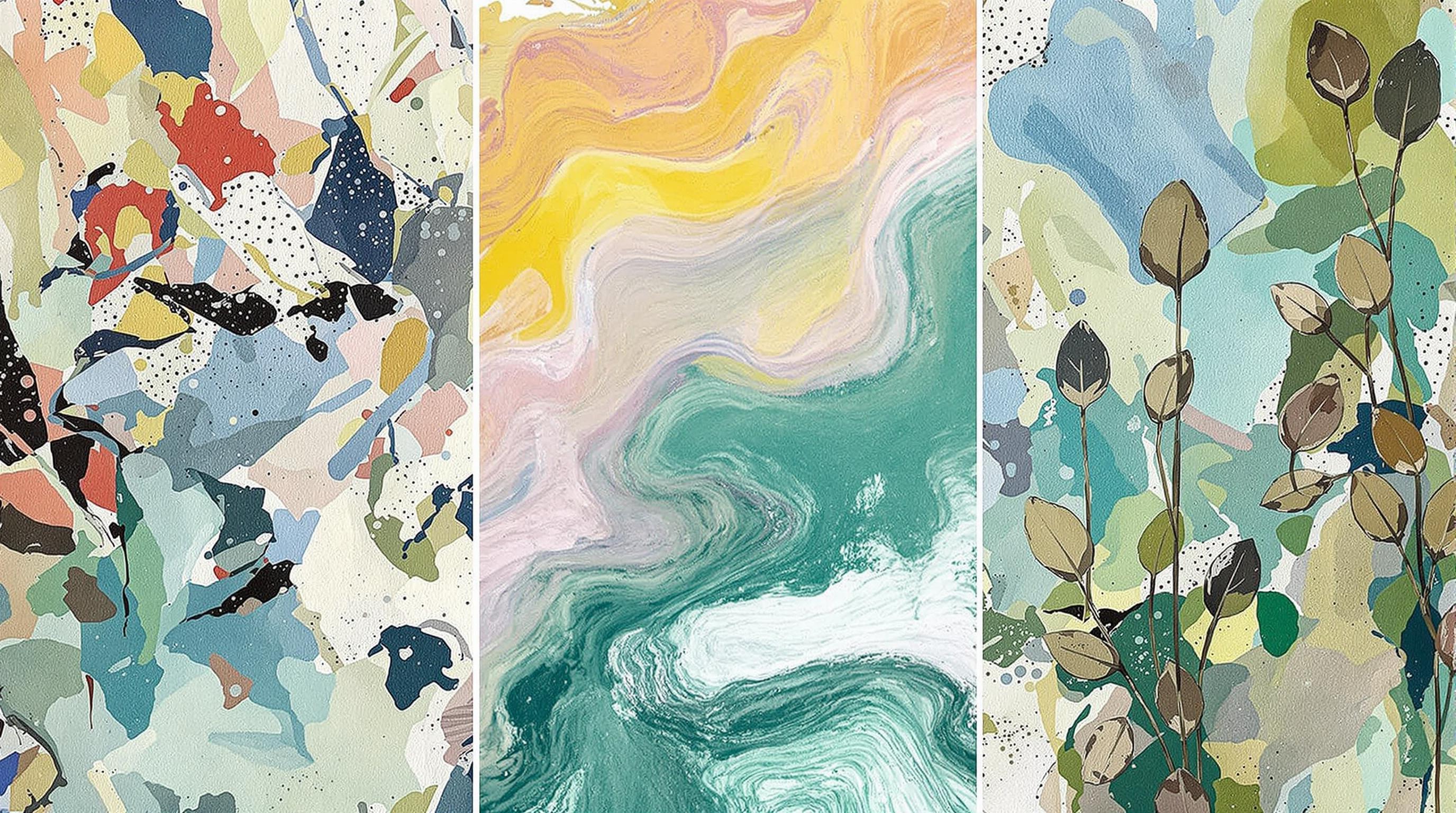Related Articles
- The Hidden Influence of Ergonomics: How Tool Design Shapes Our Physical Spaces and Daily Lives
- The Silent Influence: How Hidden Home Implements Shape Our Daily Routines and Spaces
- The Counterintuitive Role of Chaos: How Messy Tool Storage Can Lead to Unexpected Home Innovations
- Exploring the Unseen: How Audio Experiences Shape the Art of Domestic Spaces and Color Perception
- Rethinking the Mundane: How Everyday Objects are Becoming the Canvas for Modern Artistic Expression in Home Spaces
- Cultivating Chaos: The Surprising Benefits of Embracing Weeds in Your Garden Ecosystem
7 Unique Ways to Incorporate Biophilic Design into Your Painting and Decor for a Healthier, More Inviting Home Environment
7 Unique Ways to Incorporate Biophilic Design into Your Painting and Decor for a Healthier, More Inviting Home Environment
7 Unique Ways to Incorporate Biophilic Design into Your Painting and Decor for a Healthier, More Inviting Home Environment
1. Embrace Natural Light
Natural light is crucial in biophilic design; it can significantly affect mood, productivity, and overall well-being. To enhance natural light in your home, consider painting your walls in light, reflective colors such as whites, soft creams, or pastel shades. This choice not only brightens up the space but also creates an airy and serene environment.
Use sheer curtains or window films that allow sunlight to filter through while providing privacy. This approach gives you the flexibility to adjust the level of light streaming into your home. Also, strategically placing mirrors to reflect light can make small spaces feel more expansive and connected to the outdoors.
Incorporating open shelving or eliminating bulky furniture can also help enhance light flow, maximizing bright, inviting spaces that embody biophilic principles. For recommendations on color choices, consider consulting design resources like "The Color Code" by Anna Starmer.
2. Incorporate Plant Life
Integrating plants into your décor enhances air quality and brings the vitality of nature indoors. Start by identifying spaces in your home that could benefit from greenery; this could be windowsills, shelves, or corners that feel empty. Choose a variety of indoor plants, like snake plants or pothos, which are known for being low-maintenance and highly air-purifying.
You can also consider vertical gardens or plant walls as both a stunning focal point and a way to save space. Additionally, painting pots in earthy tones or vibrant colors can add a unique touch that complements your overall decor.
For those who may struggle with caring for live plants, consider faux options that replicate the beauty of nature without the upkeep. Numerous studies indicate that simply having plants in your space can lower stress levels (Kaplan & Kaplan, 1989).
3. Use Natural Materials
Integrating natural materials into your painting and décor can enhance the sensory experience of your home. Consider using wood, stone, bamboo, or jute in furniture, flooring, or accessories. Think about painting your walls in colors that mimic the tones of nature—earthy browns, muted greens, or even clay reds—to foster a calming atmosphere.
Furniture made from reclaimed wood or ethically sourced materials can help create spaces that evoke durability and warmth. By incorporating handmade or artisanal pieces, you not only support craftsmanship but also connect more deeply with the natural world.
Adding elements such as a stone fireplace or a jute rug can integrate more texture, enhancing the tactile experience within your home. Research shows that natural materials can improve well-being by providing a more comforting and restorative space (Haq, 2013).
4. Create Scenic Views
Incorporating images or paintings that reflect natural landscapes can improve the ambiance of your home. Choose artwork or murals that depict tranquil scenery like forests, mountains, or beaches to provide mental escape and relaxation. An art piece with vivid colors or detailed textures can serve as a focal point, grounding the space in a biophilic approach.
You can also consider framing carefully selected nature photographs or artwork to enhance the connection with the outdoors. Such visual elements can help evoke positive emotions and a sense of peace in your home, making daily spaces feel more inviting.
Additionally, with technology advancements, using digital screens that change images can provide varying atmospheres throughout the day. Crafting an artwork collection that prioritizes nature orientation will encourage a harmonious balance within your environment.
5. Incorporate Water Features
Water features introduce tranquility and promote relaxation in a home, embodying the essence of biophilic design. If space allows, consider adding a small indoor fountain or a decorative bowl filled with water. The sound of flowing water can be soothing, creating a peaceful backdrop in any room.
In terms of painting and decor, you could use blue and turquoise tones to enhance the feeling of water within your spaces. These colors can often instill a sense of calm and clarity, perfect for bathrooms or calming retreat-like areas within the home.
Smaller elements like aquariums or water sculptures can also provide a connection with nature. Research indicates that exposure to the sight and sound of water can reduce stress and induce feelings of refreshment (White, 2013).
6. Focus on Biophilic Art and Decor
Incorporate biophilic art, such as prints that showcase natural environments or abstract representations of flora and fauna. Using decorative objects inspired by nature, such as sculptures or vases shaped like animals or plants, can subtly promote biophilic design in your space.
Additionally, consider textiles that feature botanical patterns—plant motifs on cushions or curtains can contribute to a cohesive theme that celebrates nature. Framing your art in sustainable materials creates a direct link between your décor and environmental stewardship.
Experimenting with colors and textures inspired by nature can enhance ambiance and improve emotional responses. By transforming your decor choices to reflect elements of nature, you reinforce the feeling of being grounded and connected to the world outside.
7. Optimize Space for Nature Interaction
Consider the layout of your furniture and decor to encourage interaction with natural elements. Create cozy seating areas close to windows or near plants, fostering an environment where you can appreciate the outdoors even while indoors. This setup allows you to connect with nature while enjoying leisurely moments.
Additionally, introducing organic shapes into your decor through furniture or pathways can mimic the forms of nature, enhancing the theme of biophilia. Curvy designs or rounded edges can give a soft feel that contrasts with the rigidity of conventional furniture.
Finally, consider using biophilic design principles in your outdoor spaces as well; connecting your indoor and outdoor areas ensures that natural elements play a crucial role in your experience at home.
Conclusion
Incorporating biophilic design into your home goes beyond aesthetics; it creates a healthier, more inviting environment that promotes well-being. By utilizing natural light, greenery, natural materials, scenic views, water features, and biophilic art, you can transform your space into an oasis that connects you to nature.
Designing with biophilia in mind can ultimately lead to improved mental and physical health, as research has shown (Kaplan & Kaplan, 1989; White, 2013). The unique approaches outlined above offer both practical and creative solutions to curate a nurturing home that reflects your inner connection with the environment.
As you embark on your journey of biophilic design, remember to personalize each element to reflect your relationship with nature, thereby creating a space that not only feels good but also represents your individuality.





